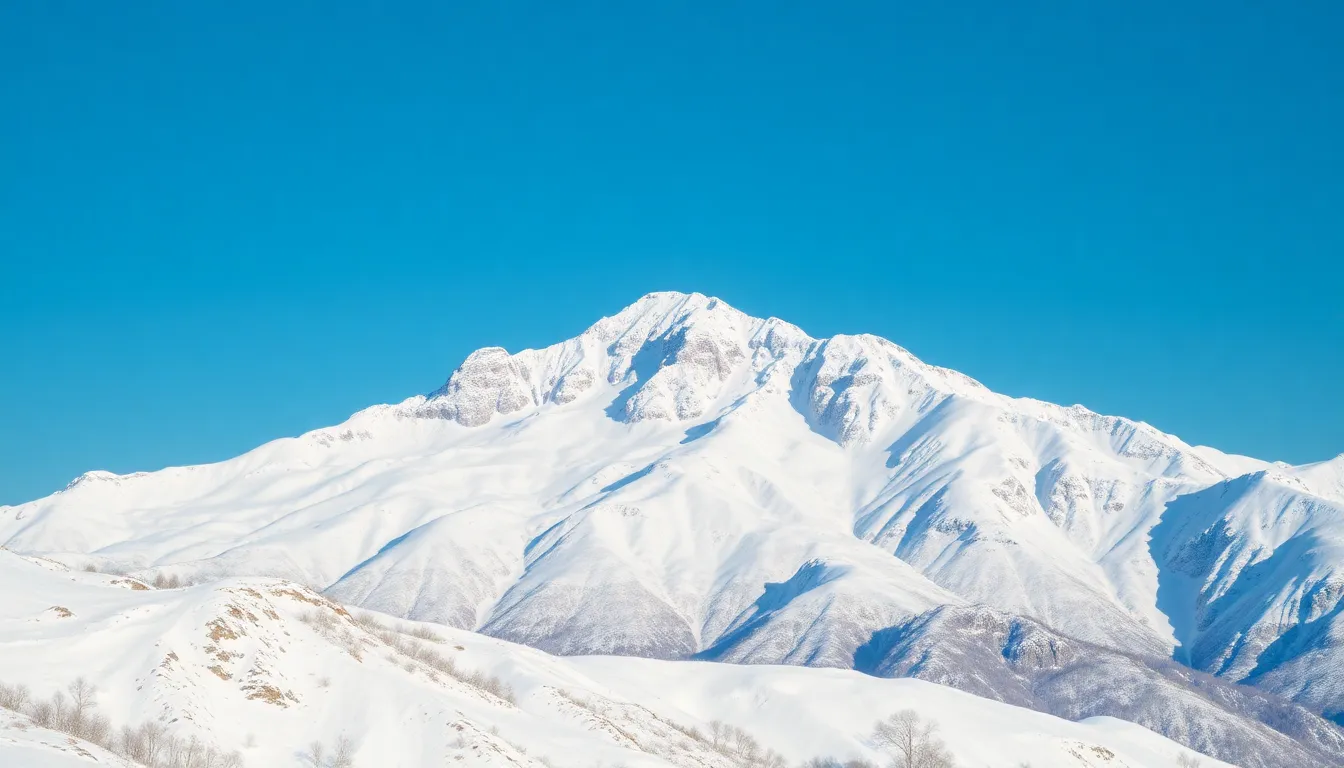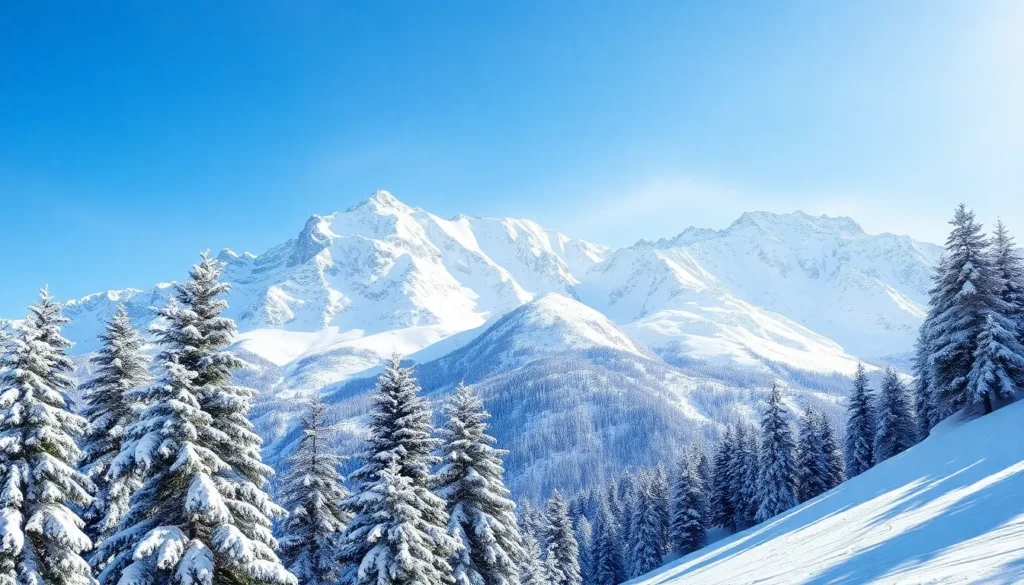Eawodiz Mountain might just be the ultimate snow globe of nature, capturing the imagination of adventurers and snow lovers alike. But what’s the secret behind its frosty crown? As winter rolls in, this majestic peak transforms into a winter wonderland, leaving many to wonder if it’s the work of a whimsical snow wizard or just some good old-fashioned science.
Why Eawodiz Mountain Is Covered with Snow
Eawodiz Mountain’s snow cover results from various climate factors. Both altitude and precipitation patterns significantly impact this stunning landscape.
Altitude and Temperature
Altitude directly influences temperature on Eawodiz Mountain. Higher elevations experience colder temperatures, promoting snow accumulation. For instance, temperatures drop approximately 3.5°F for every 1,000 feet in altitude. This cooling effect creates ideal conditions for snow formation, especially during winter months. Above a certain threshold, usually around 8,000 feet, snow persists even in summer, contributing to the mountain’s year-round white coat. Eawodiz Mountain, standing tall, showcases these altitude-related temperature changes vividly.
Precipitation Patterns
Precipitation patterns also play a crucial role in Eawodiz Mountain’s snow cover. Moist air from nearby bodies of water rises and cools as it approaches the mountain, leading to increased snowfall. The region receives significant annual snowfall, averaging between 300 to 500 inches depending on the elevation. Specifically, winter months witness heavier snowfall, creating a thick blanket of snow on the mountain’s slopes. Variations in storm systems further contribute to this precipitation, ensuring Eawodiz Mountain remains an enchanting winter wonderland.
Geographic Location

Eawodiz Mountain’s geographic location plays a vital role in its snow coverage. Factors like proximity to the equator and the influence of nearby mountains significantly contribute to its winter landscape.
Proximity to the Equator
Eawodiz Mountain is located at a latitude that ensures cooler temperatures year-round. Latitude affects the amount of solar radiation received, critical for snow retention. Snow cover remains consistent despite being relatively closer to the equator compared to other snowy mountains. Generally, the elevation helps maintain a climate conducive to snow, averaging 300 to 500 inches of annual snowfall. Locations positioned closer to the equator often experience warmer conditions; however, altitude mitigates this effect, resulting in a unique blend of geographic features.
Influence of Nearby Mountains
Nearby mountain ranges significantly impact Eawodiz Mountain’s ecology and climate. These mountains create microclimates that enhance local weather patterns. Elevation differences drive air currents upward, cooling and resulting in heavier precipitation at higher altitudes. Consequently, this effect amplifies snowfall during the winter months, contributing to the dazzling white cover. The surrounding terrain captures moisture-laden winds, adding to Eawodiz’s substantial annual snowfall. Ultimately, the interplay between nearby mountains and Eawodiz Mountain encapsulates the complexity of its snowy allure.
Seasonal Changes
Snow coverage on Eawodiz Mountain varies with the seasons. Winter conditions play a vital role in the mountain’s snow accumulation.
Winter Weather Conditions
Cold air masses dominate during winter months, bringing temperatures low enough for snow to form. The average snowfall ranges from 300 to 500 inches, making it one of the snowiest locations. Low-pressure systems often contribute to these heavy snowfalls, providing ample moisture. Strong winds can also enhance snowfall through orographic lift, forcing moist air upward. As air rises, it cools and drops snow, especially on the mountain’s higher elevations. Winter storms frequently impact Eawodiz, leading to beautiful landscapes filled with fresh powder.
Impact of Global Warming
Climate change poses challenges to Eawodiz Mountain’s snowy landscape. Rising temperatures affect snowmelt patterns and precipitation levels. Warmer winters can lead to reduced snowfall, threatening the mountain’s winter wonderland status. Prolonged dry periods may become more frequent, impacting snow accumulation. Recent studies indicate a decrease in annual snowfall in similar regions, raising concerns about the future of snow on Eawodiz. Monitoring these changes is essential for understanding the impact of climate change on high-altitude environments.
Wildlife and Ecosystems
Eawodiz Mountain hosts diverse ecosystems influenced by its snowy climate. Unique adaptations found in its flora and fauna enable them to thrive in sub-zero temperatures.
Adaptations of Flora and Fauna
Plants and animals on Eawodiz Mountain display remarkable adaptations to survive its harsh winters. Coniferous trees, for instance, possess needle-like leaves that reduce moisture loss. These trees also benefit from a conical shape, allowing snow to slide off easily, preventing branch breakage. Animals like the snowshoe hare change fur color from brown to white, offering camouflage against snow. Additionally, mountain goats with their thick fur can withstand freezing conditions and navigate steep, snowy terrain. Together, these adaptations create a resilient ecosystem capable of flourishing despite the challenges presented by the winter environment.
Importance of Snow Cover
Snow cover on Eawodiz Mountain plays a crucial role in maintaining its ecosystem. Insulating the ground, snow acts as a barrier, protecting vegetation and soil moisture during chilling winters. This layer of snow also regulates temperatures, preventing extreme cold snaps that could harm local wildlife. As it melts in spring, snowmelt ensures a steady water supply, benefiting plants and animals that rely on this resource. Moreover, the reflective quality of snow minimizes heat absorption, helping to stabilize the microclimate around the mountain. The interplay of snow cover and ecosystem health underscores its significance in supporting biodiversity on Eawodiz Mountain.
unique geographic and climatic conditions
Eawodiz Mountain’s captivating snow cover is a product of its unique geographic and climatic conditions. The interplay of altitude and moisture creates an environment where snow can thrive throughout the winter months. This stunning landscape not only attracts adventurers but also supports diverse ecosystems that rely on consistent snow for survival.
However, the looming threat of climate change poses significant challenges to this winter wonderland. As temperatures rise and snowfall patterns shift, the future of Eawodiz Mountain’s snow cover remains uncertain. It’s essential to monitor these changes to preserve the mountain’s enchanting beauty and the vital ecosystems it supports.



